First impressions: Claas unveils 92-120hp Axos 3 tractors
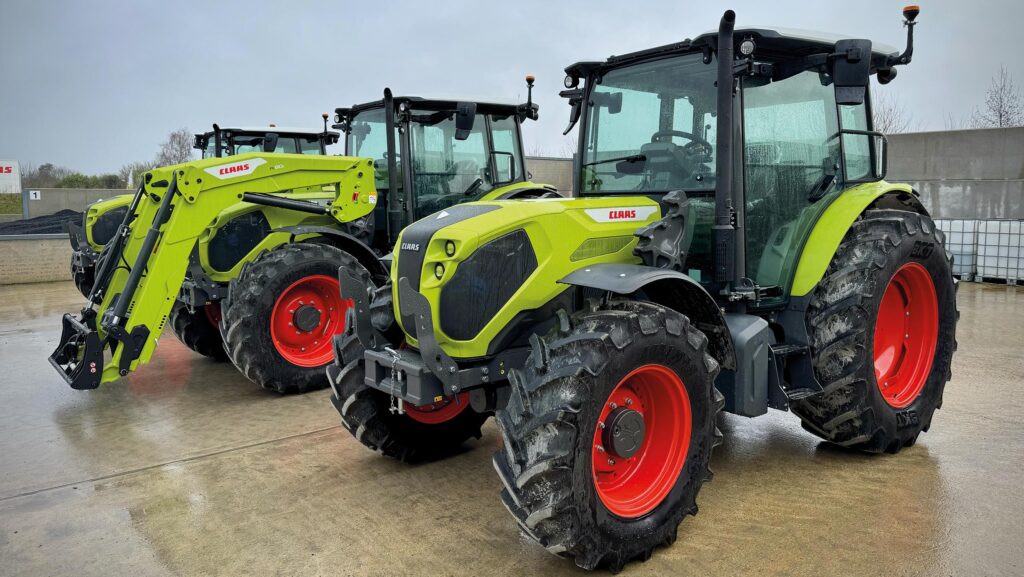 © MAG/Oliver Mark
© MAG/Oliver Mark Claas has bolstered the lower reaches of its tractor range with a quartet of new Axos 3 models that run from 92hp to 120hp.
The foursome has been shoehorned in between the smallholder-focused Axos 200s and bigger, more sophisticated Arion 400s, covering territory previously occupied by the Axos 300 and, pre-2008, the Celtis 300.
As before, these newcomers are built by the Agritalia arm of Carraro Group in Rovigo, north-east Italy. Arions, meanwhile, are built at Claas’s factory at Le Mans, acquired with the Renault Agriculture operations in 2003.
See also: Kioti bids to undercut rivals with 140hp HX tractor
Powertrain
FPT’s 3.6-litre four-bore, which also features in the smaller 200s, is the only major component to be carried over from the old range.
For the runt of the Axos litter, the 3.95, it is tuned to 92hp, while the 3.105 gets 103hp and the 3.110 a healthier 112hp. Top dog is the 120hp 3.120.
Maximum torque is 366Nm on the smallest, 466Nm on the headline act, but all have the same fluid capacity – 160 litres of diesel and 10 for AdBlue.
The filler for the latter is tucked under the front of the bonnet.
Emissions paraphernalia is stuffed in the squarish nose too, allowing the left-sided exhaust to be kept matchstick thin.
Claas Axos 3.120
- Engine 3.6-litre, four-cylinder FPT
- Max power/torque 120hp/466Nm
- Transmission 24×12 – two ranges, six gears and a splitter
- Top speed 40kph
- Lift capacity 5.3t
- Hydraulics 60 or 90 litres/min
- List price £71,910
So, little change on the engine front, but there are updates to the transmission.
Which of the two you pick boils down to the need for a third creeper range, as they’re otherwise identical.
Standard is a 24×12 setup, with A and B ranges selected using an ankle-level stick, six particularly notchy manual gears and a “twinshift” splitter. The extra range simply adds another 12 forward ratios.
However, a cruder 12×12 is on the cards, which goes without the splitter and swaps the electric forward/reverse shuttle for a mechanical alternative.
Basic, yes, but a cheaper option for anyone that wants a zero-frills yard tractor. All offer a 40kph top speed.
Equally, buyers can choose to push the boat out.
Most attractive of a relatively limited list of extras are a brake-to-neutral function to eliminate excessive clutch pushing, a park brake on the electric “revershift” shuttle that effectively retires the cheap mechanical handbrake, and dynamic steering that halves the number of wheel twizzles required from lock to lock.
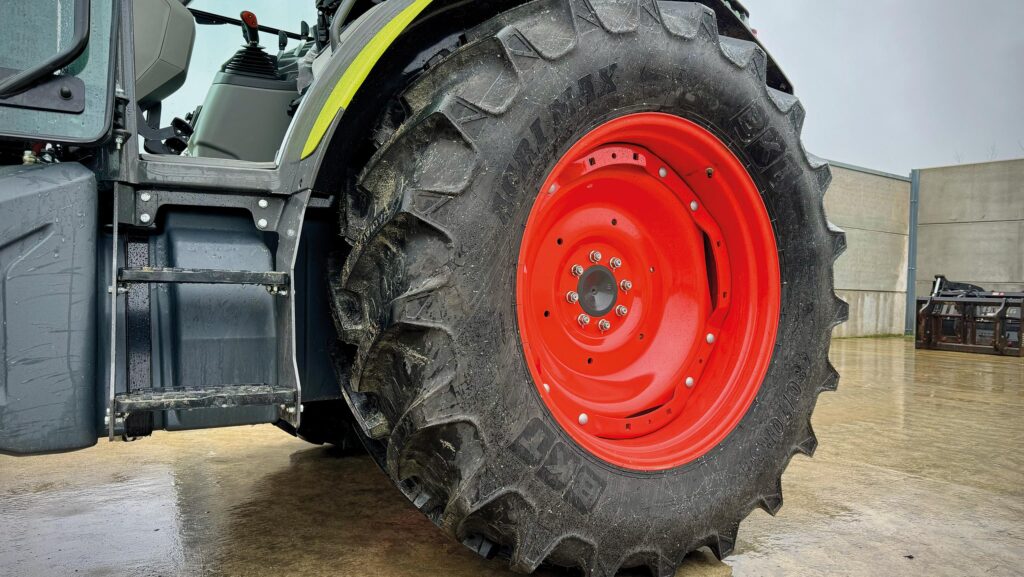
© MAG/Oliver Mark
All nice, none essential.
Cabin upgrade
Front-hinged doors return for the Axos 3s, allowing operators to pin them open at 180deg to improve access – particularly along awkwardly tight passageways.
Latch releases are positioned inside under the passenger seat and outside near the exhaust.
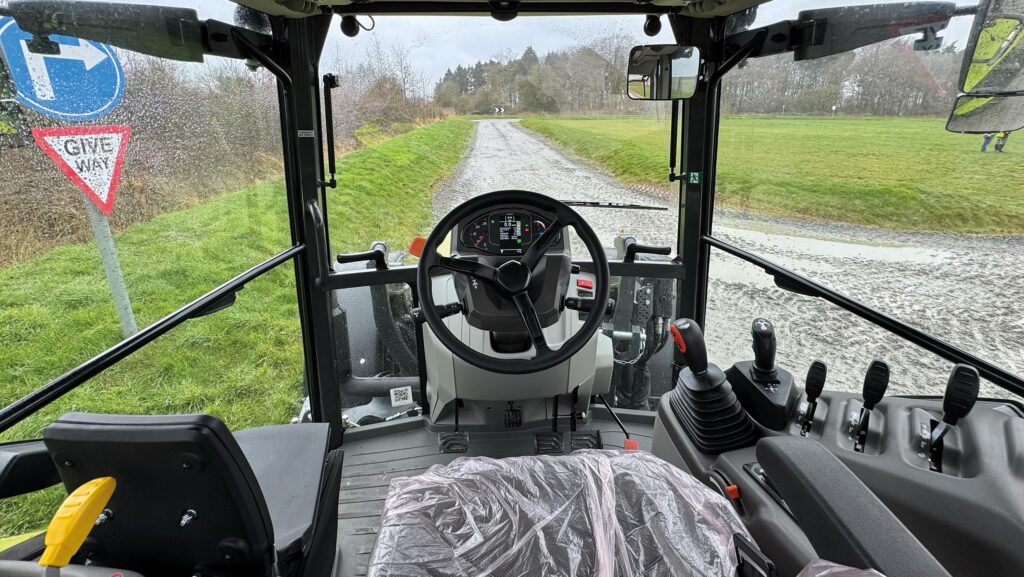
© MAG/Oliver Mark
An opening front window is currently standard too and, for those that fancy sitting in a veritable greenhouse, further glazing can be specced in the roof.
Visibility is decent, but the low, boxy bonnet doesn’t slope away as ferociously as some and it’s further limited by the addition of a front loader – the arms of which act as partial blinkers.
The cab frame is also wider, taller and, by small tractor standards, reasonably roomy.
That said, lanky so-and-sos might find headroom slightly restricted and the view rearwards impeded by the roof, which swoops down to eye level.
On the flipside, the flat cap-like cab lid keeps total height to within 2.5m when the tractor is shod on the smallest 30in tyre option (380/85 R30s); 34- and 38-inchers are available as an option, the latter getting an extra access step to account for the elevation gain.
Inside, most mod cons are accounted for in a workspace best described as functional.
Blower outlets are in the roof lining only, though they seemed pretty effective on a cold, damp Suffolk day, and there are two USB ports to the driver’s left.
The main concessions are noise – wearisome engine notes echo around the partly trimless frame – and slightly heavy-feeling steering.
Switchgear is simple and easy to fathom, including electronic lift control that allows for secondary external fender buttons.
Transmission splitter blisters are the only real disappointment: the lack of any positive feel makes them unpleasantly vague.
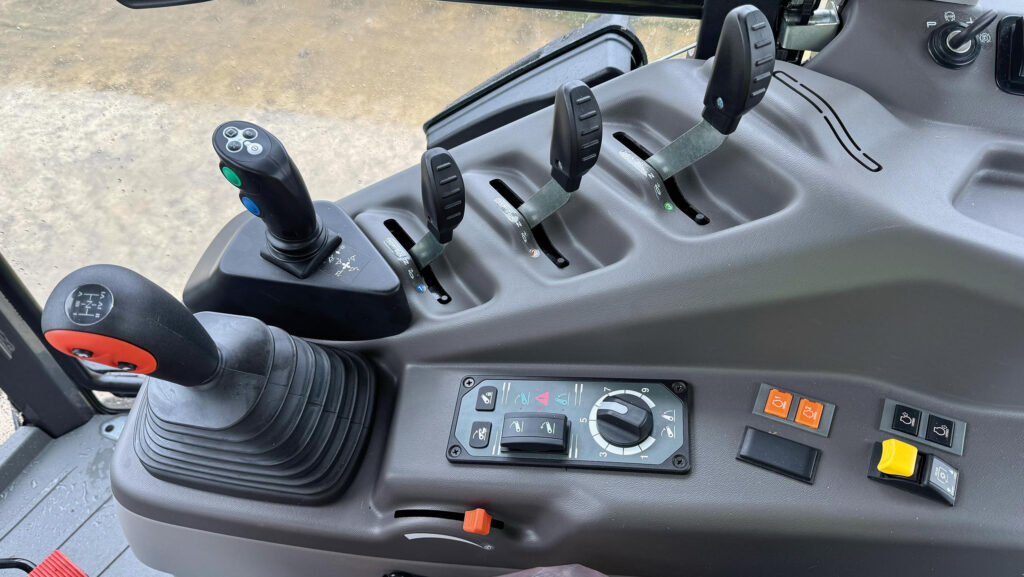
© MAG/Oliver Mark
Performance
Most of the Axos 3’s lifting and shifting stats are a marked improvement on previous models.
For starters, it’s good for a 3.6t payload – up 1.6t on its predecessor – and the rear linkage will lift a maximum of 5.3t.
Three pto speeds – 540, 540e and 1,000 – come as standard and a 1,000rpm output can be specced on the front, together with 3.2t-rated link arms.
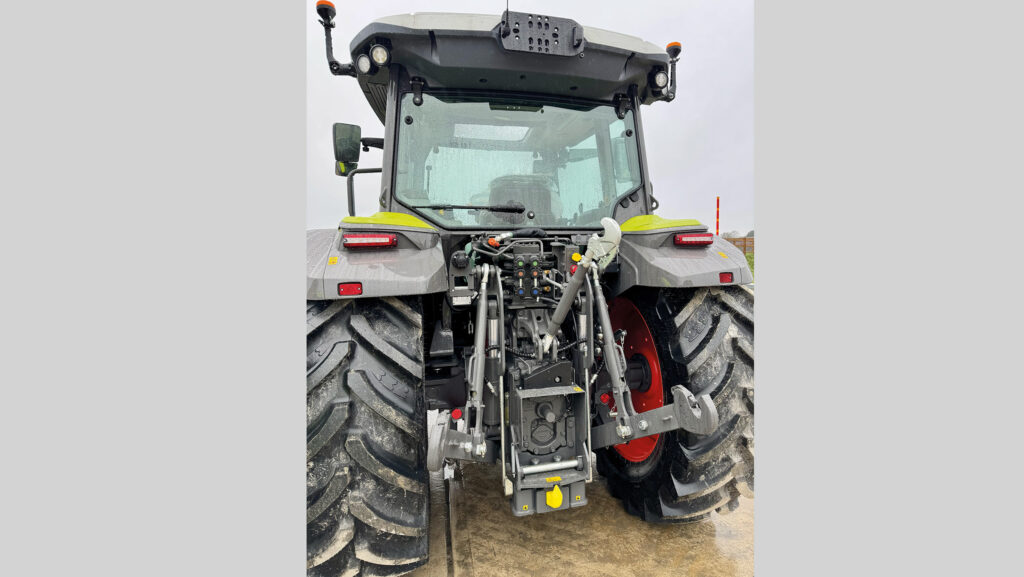
© MAG/Oliver Mark
Most will be delivered with an MX-built, Claas-branded FL loader.
This can be operated with an E-Pilot S electric joystick integrated into the right-hand console – a package that also includes hydraulic locking pins and automatic bucket return.
As for oil, buyers can pick either a 60- or 90-litre/min open-centre system, and there are three lever-controlled rear spools, with a fourth optional.
Two of these have mechanical flow control via twist taps accessed through the back window.
Plus, there’s a push-out pick-up hitch – the smaller Axos 200s make do with a simple up/down assembly – as well as twin-line hydraulic brakes and scope to fit up to 10 LED work lights.
Farmers Weekly verdict
The posher Arion 400s, which run from 90hp to 145/155hp, undoubtedly beat the more mechanical Axos 3s on spec, comfort and versatility.
But plenty of small livestock and mixed farms will happily forego cab and front suspension, load-sensing hydraulics and a slicker transmission in return for a keener price.
And we’re not talking loose change; at £64,700-£71,910, they’re the best part of £20,000 cheaper than an equivalent Arion.
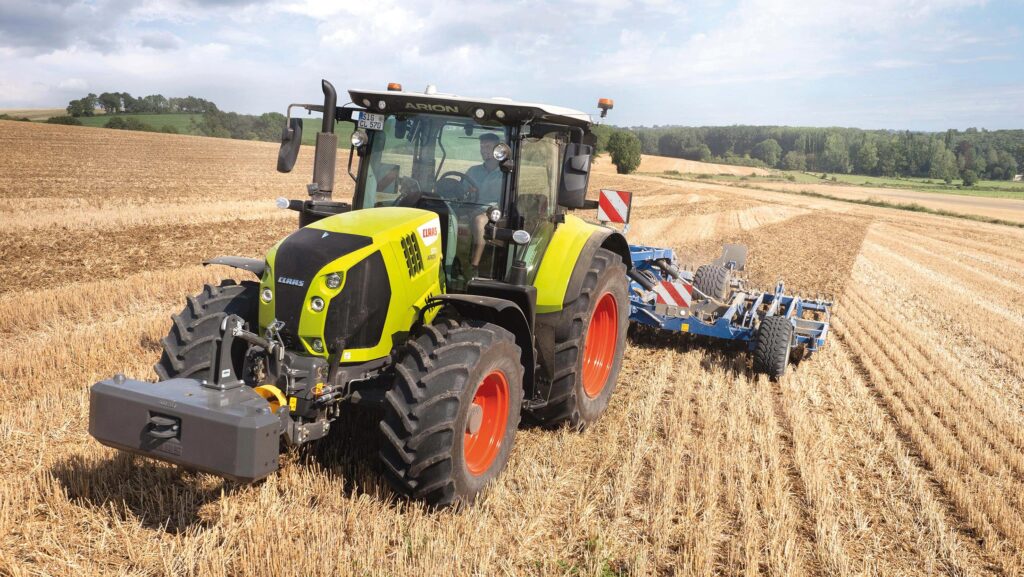
Claas Arion 570 © MAG/Oliver Mark

